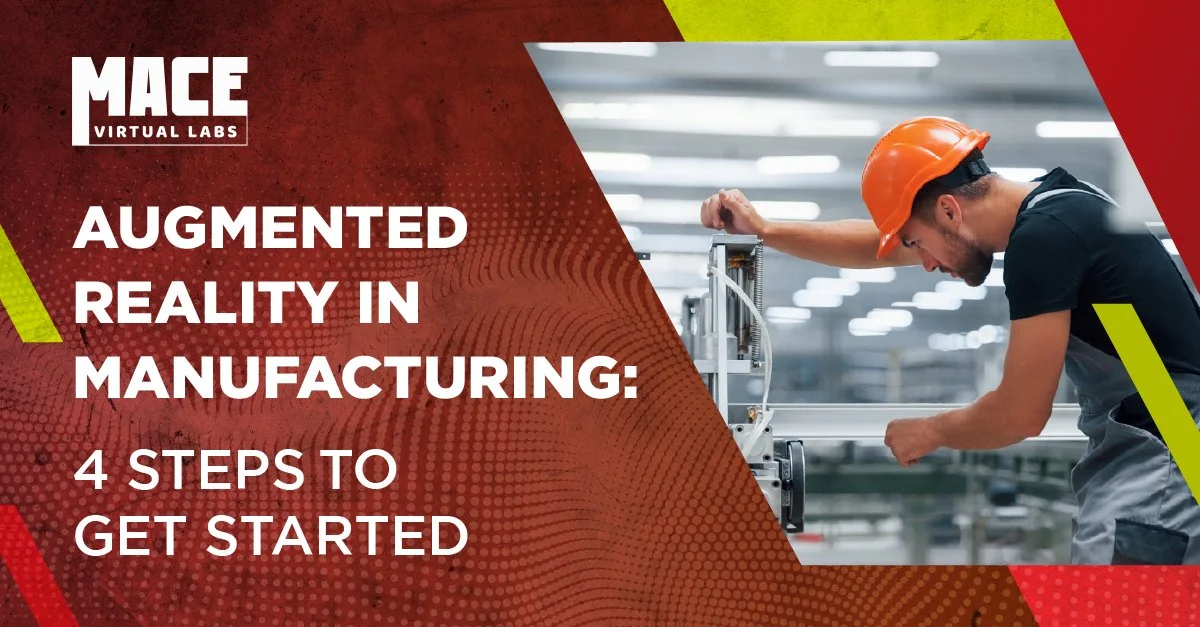Augmented Reality in Manufacturing: Steps to Get Started
Manufacturing is the foundation of many industries, and augmented reality (AR) technology has the potential to revolutionize the way they operate. By integrating AR into manufacturing processes, manufacturing operations can reduce costs, increase productivity, and improve customer satisfaction.
That said, implementing AR in a manufacturing setting is not as simple as purchasing some headsets and pressing play. To do it right, organizations need to develop actionable goals, partner with the right provider, and create an AR solution that is sustainable over time.
Find a Partner
If you’re looking to integrate augmented reality into manufacturing processes, your first step will be to find the right partner. While an organization could certainly order 20+ Meta Quest headsets on its own, this approach fails to recognize the nuances of said equipment.
Regardless of the industry, AR is not exactly a plug-and-play kind of solution. Equipment, software, and compatibility not only vary across the board, but they also require training and careful implementation to ensure that your teams get what they need.
Because of the complexity in the process, we advise against the DIY route of choosing your own AR/XR solution. It’s essential to partner with an augmented reality specialist that has a portfolio of past projects that demonstrate their ability to integrate AR technology within a variety of businesses. By partnering with a team like MACE Virtual Labs, manufacturing organizations can create a highly effective AR initiative that maximizes results and minimizes confusion.
Research and Brainstorm
Once you’ve found a partner, your next step will be to create a strategic implementation plan. This will include the type of AR you’ll be using, who will be using it, what the initiative aims to achieve, and how much budget your organization can allocate for it.
For example, many manufacturing operations utilize augmented reality in their training processes. Augmented reality in manufacturing is especially impactful, as a person can get “hands-on” experience in virtual high-risk environments without risking injury or damage. Using an AR solution, an organization could train team members on forklift operation, personal protective equipment, and other safety protocols.
The type of training (or trainings) you implement will also raise the question of interactivity and the levels required to achieve it. Here is when you’ll consider whether you need eyes, hands, or a full-body AR experience. The level of interactivity will dictate the type of equipment you need.
Purchase Hardware and Software
Once you have identified the type of AR program you wish to use, you can plan to purchase the required hardware and software. This can be a complex process, so it’s essential to lean on the guidance of your AR partner here.
In some cases, there will already be an existing hardware and software combination that can satisfy your needs. For example, a variety of programs already exist for training on forklifts, assembly lines, and safety protocols.
In other cases, you’ll need to build a new augmented reality solution for your manufacturing needs. While this latter option will take more time, it can help you train team members on proprietary techniques and equipment for your business.
Once again, an experienced partner will come into play here. They will be able to offer strategic advice when it comes to building new AR solutions for manufacturing, tailoring existing ones to your needs, and ensuring that hardware and software integrate with one another.
Arrange Device Management
Just like your other manufacturing equipment, AR technology requires routine maintenance.
Before implementing an AR solution, you’ll need to create a plan to store and sanitize equipment, as well as regularly undergo any updates for optimal performance. Collectively, these processes are known as fleet management. If you leverage a particularly large inventory of devices, the logistics of managing a fleet can quickly become complex.
In most cases, an AR specialist can either provide this service for you or help you create a schedule for said device management.
Get Started with Augmented Reality in Manufacturing
Unless your manufacturing operation possesses an XR expert, then you’ll be leaning heavily upon your partner throughout the entire process. And while there are any number of organizations providing AR/XR solutions to enterprise businesses, only MACE Virtual Labs provides full-service turnkey XR solutions designed specifically for manufacturing businesses.
From developing goals to aligning them with VR equipment and providing ongoing guidance and maintenance, MACE Virtual Labs can handle all of the details so that you can focus on your job.

